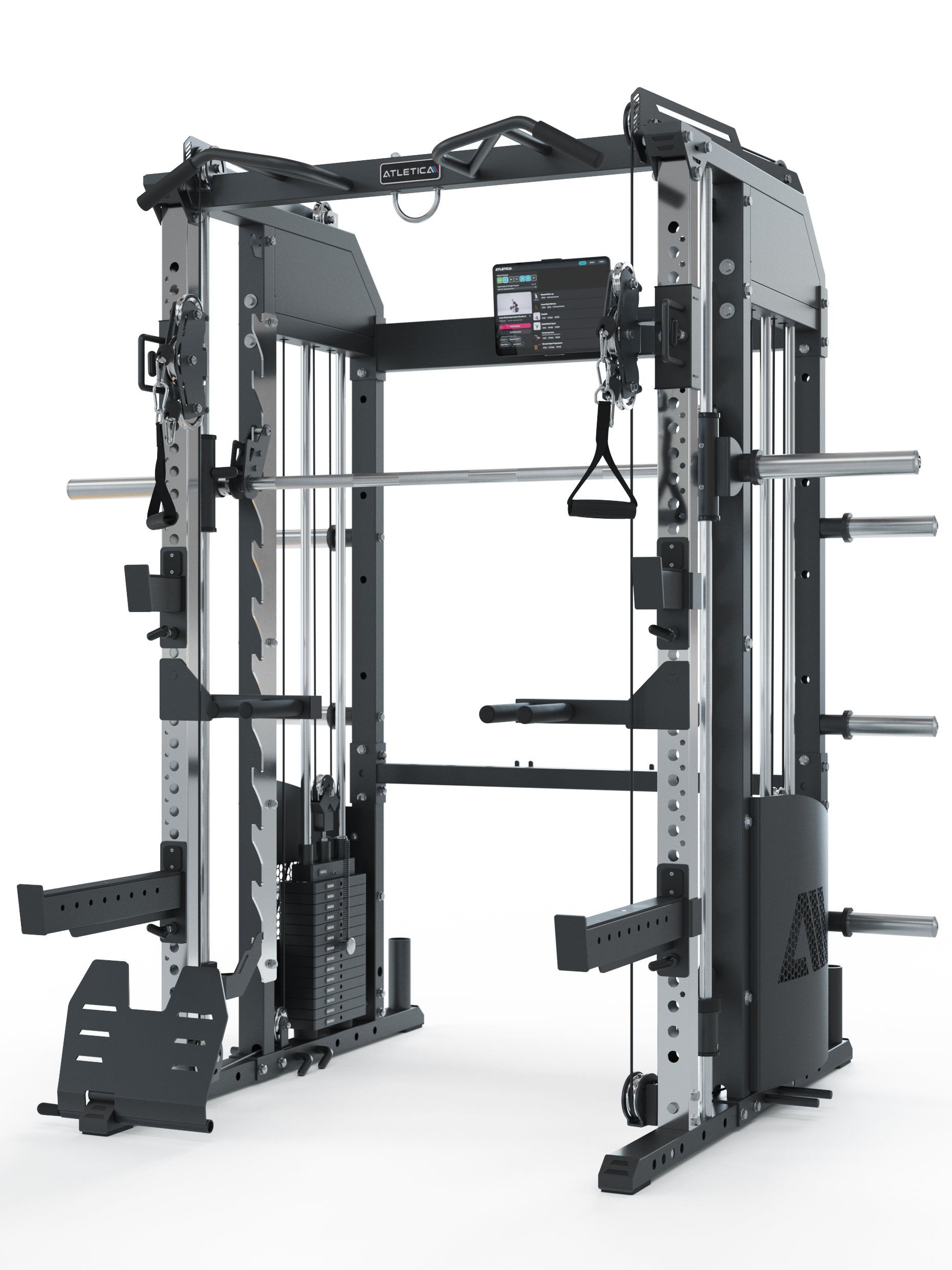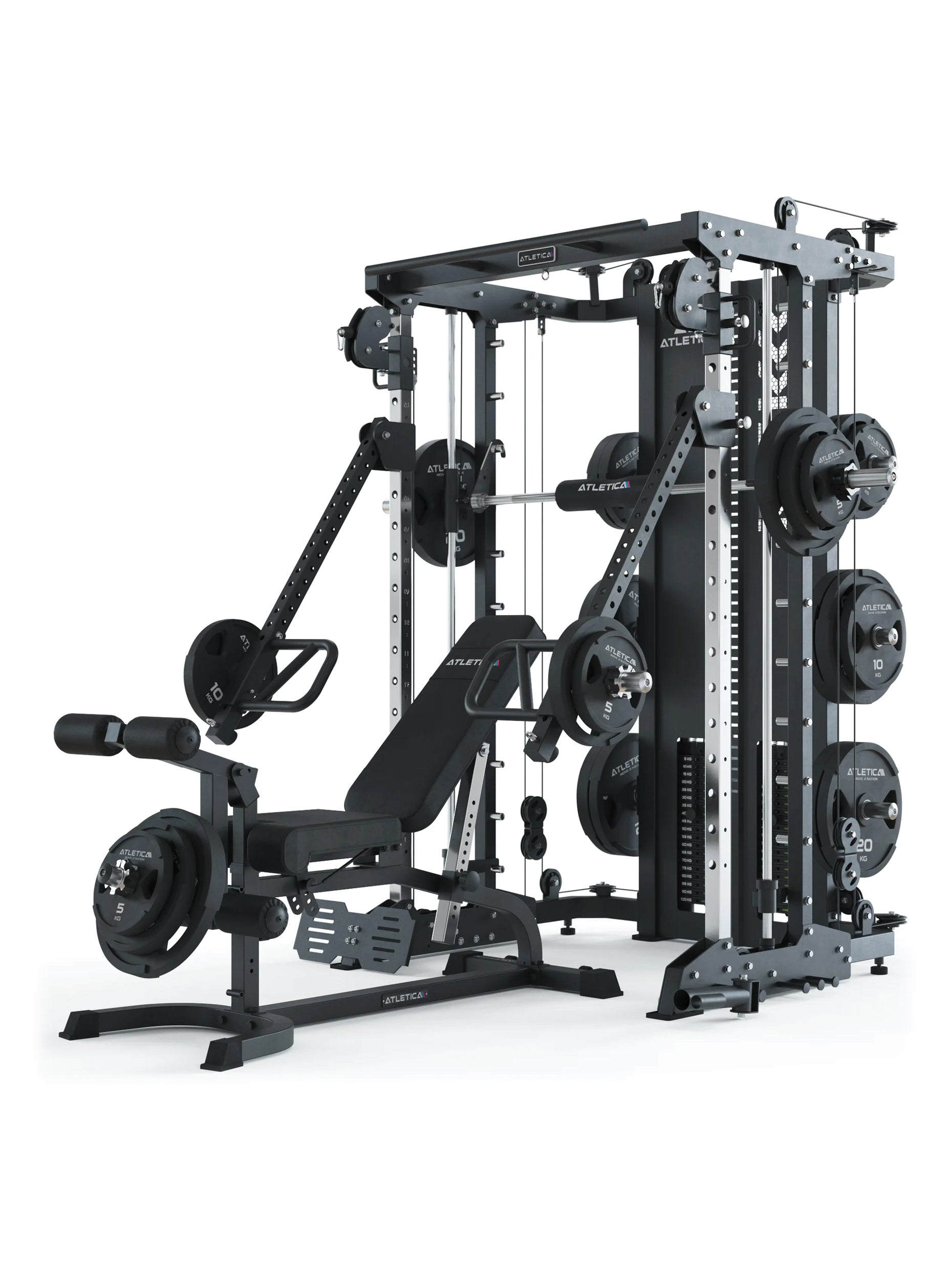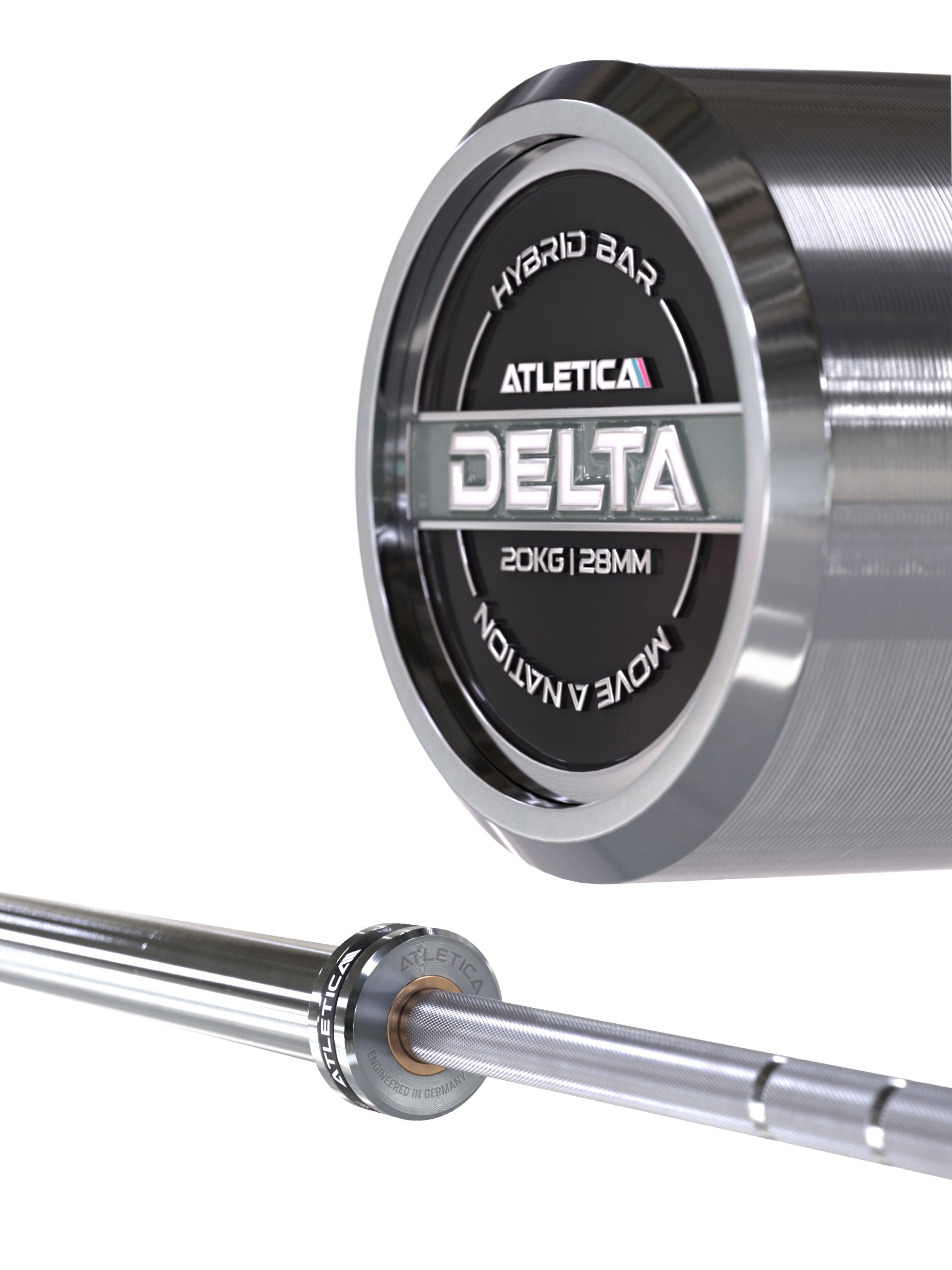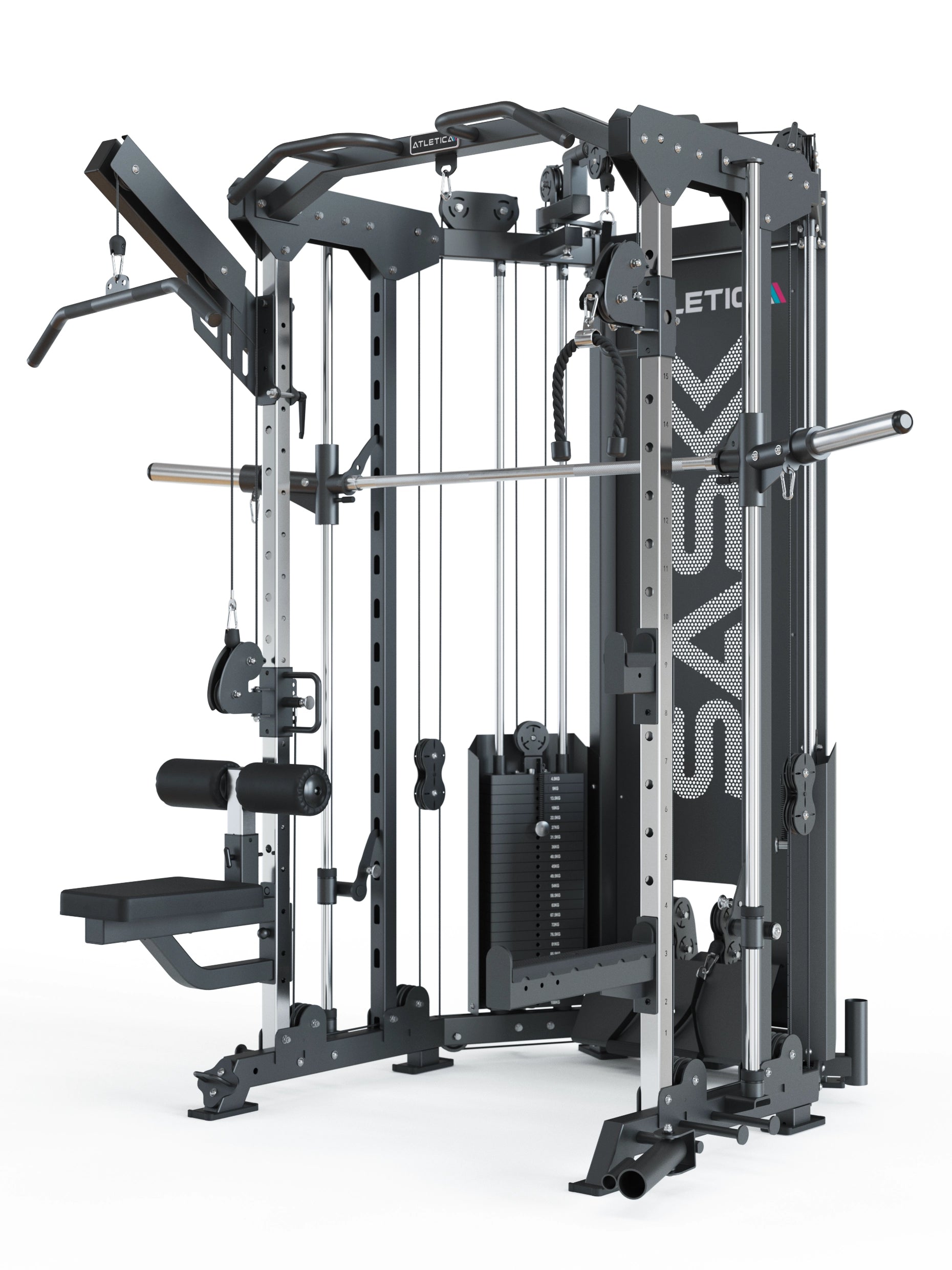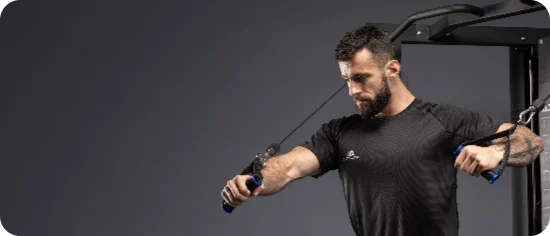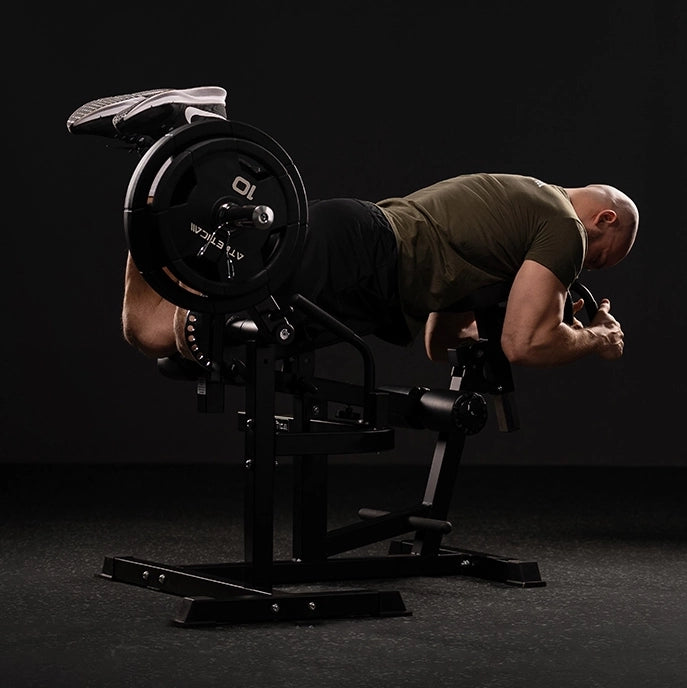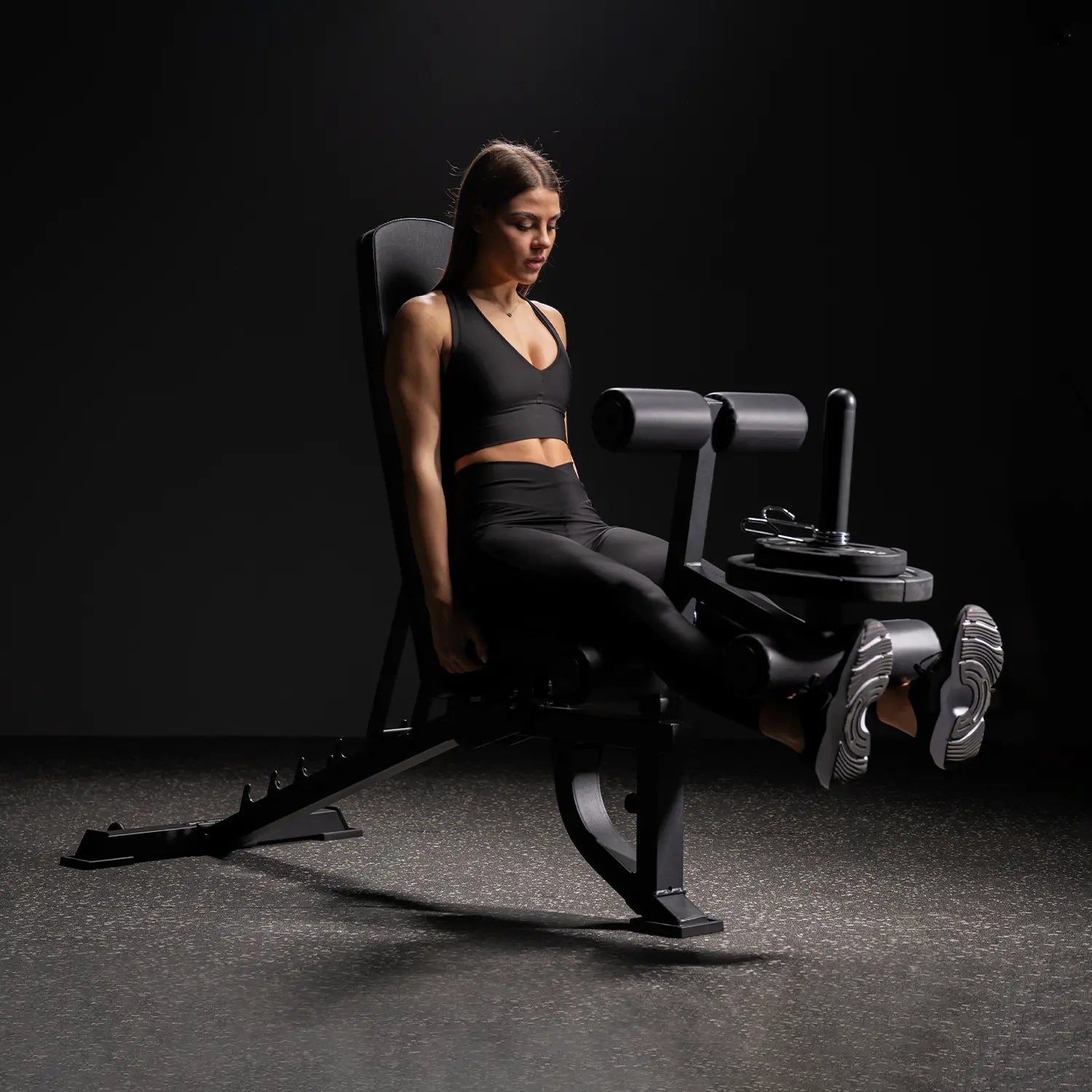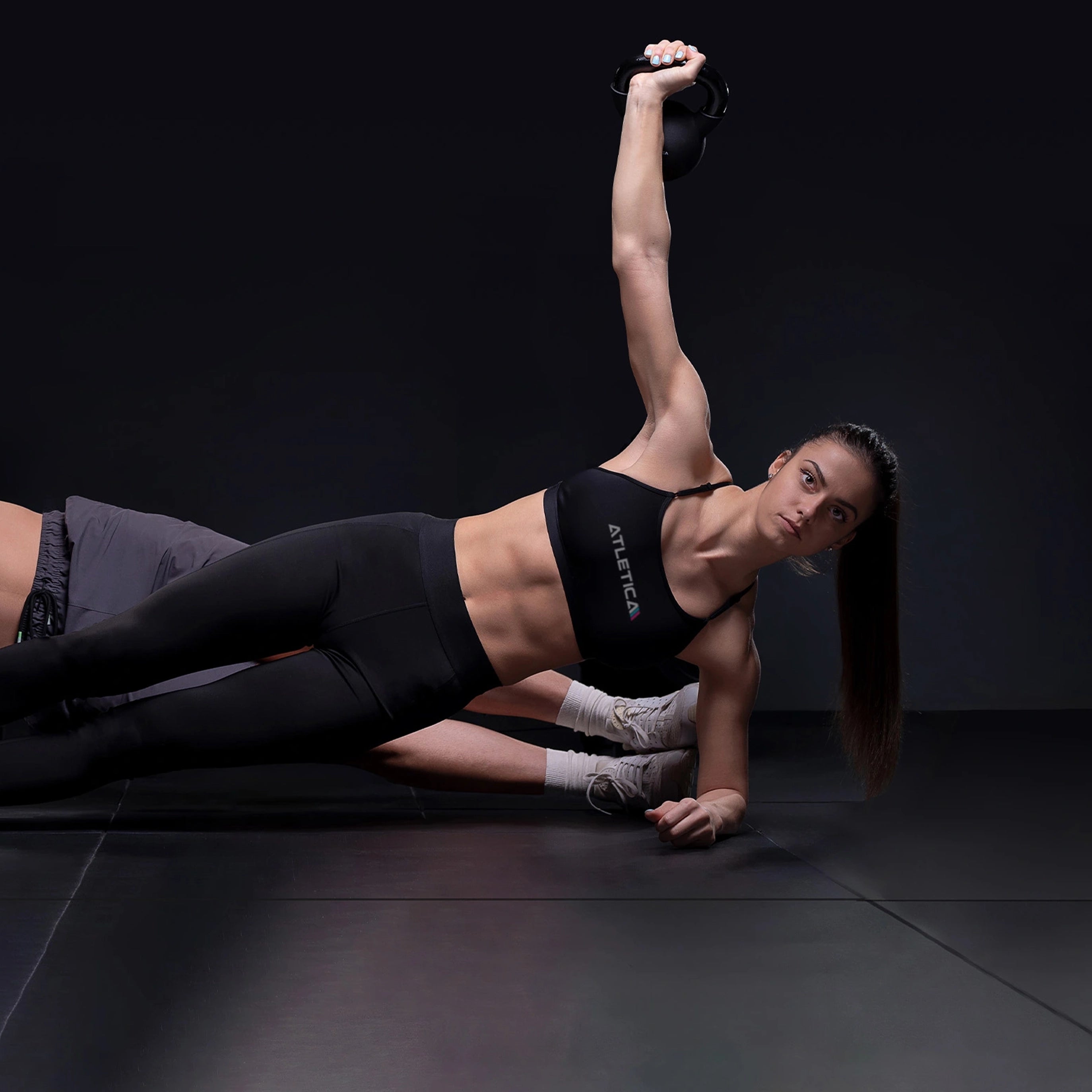You want to buy a dumbbell and are wondering what to look out for? Whether for home training or as a supplement to the gym - choosing the right dumbbells can make a big difference. From fixed and adjustable models to the right material to ergonomic handles and safety aspects: In this article you will learn everything you need to know to find the perfect dumbbells for your training and make a smart purchasing decision. Get ready to take your fitness routine to the next level!

What is a dumbbell?
A dumbbell is a small, handy fitness device that consists of a short bar with a weight attached to each end. Dumbbells are often used in strength training and bodybuilding to specifically train and build muscles. They enable a variety of exercises for almost all muscle groups, including the arms, shoulders, chest, back, legs and torso.
Unlike barbells , which place weight on both arms at the same time, dumbbells require separate control for each hand, which provides greater muscle isolation and improves balance and coordination. Dumbbells are available in a variety of weights and styles, from fixed weights to adjustable varieties that allow you to adjust the weight as needed. They are a versatile and essential piece of training equipment that is widely used in both gyms and home gyms.

Buying a dumbbell – what should I pay attention to?
When purchasing dumbbells, there are several factors you should consider to ensure they meet your training needs and are safe and comfortable to use. Here are some key points to look out for:
1. Type of dumbbells
- Fixed dumbbells : These have a fixed weight and are not adjustable. They are stable and durable but less flexible in weight selection. They are good for gyms or for those who have the space and budget for multiple weight classes.
- Adjustable dumbbells : These can be adjusted to different weights in just a few steps. They save space and are a good choice for home use as they combine the function of several dumbbells in one device.
2. Material and workmanship
- Handle material : Make sure the handle is non-slip and fits well in your hand. Rubberized or knurled (ridged) handles provide a better grip and reduce the risk of the dumbbell slipping out of your hand.
- Weight plate material : Dumbbells can be made of different materials, such as cast iron, plastic or neoprene. Cast iron is durable and sturdy, while neoprene or vinyl coatings provide a soft surface and protect the floor.
- Workmanship : Check the quality of the workmanship, especially with adjustable dumbbells. There should be no sharp edges, loose parts or wobbly connections.
3. Weight and weight adjustability
- Appropriate weight : Make sure the weight matches your current fitness level and training goals. Beginners usually need lighter weights, while advanced users prefer heavier dumbbells.
- Adjustability : With adjustable dumbbells, it is important that the mechanism is easy to use and safe. Systems such as quick-release fasteners or plug-in systems are practical and save time.
4. Ergonomics and comfort
- Handle width and diameter : The handle should be ergonomically shaped and comfortable to hold. A handle that is too thin or too thick can place unnecessary strain on the hand muscles.
- Length of the dumbbells : Make sure that the length of the dumbbells suits your body type, especially with adjustable models, as they are sometimes longer and therefore may offer less freedom of movement.
5. Coating and floor protection
- Rubber coating : Dumbbells with rubber or neoprene coating are gentler on the floor and quieter when put down. This is especially important for training at home to protect the floor and minimize noise.
- Shock resistance : Coated dumbbells are often more resistant to shocks and scratches.
6. Security
- Safety locks : For adjustable dumbbells, secure and stable locks are crucial to prevent the weight plates from slipping or falling off during training.
- Test seals and certifications : Look for quality certificates and safety standards that ensure that the dumbbells have been manufactured under safe and durable conditions.
7. Space requirements and storage
- Space-saving design : Adjustable dumbbells save space and are ideal for small home gyms. Consider whether a set of multiple fixed dumbbells or an adjustable model would be a better fit for your space.
- Storage system : Some dumbbell sets come with their own stands or shelves that allow for neat and safe storage.
8. Value for money
- Budget : Consider how much you want to invest. High-quality dumbbells can be more expensive, but often offer better durability and safety.
- Durability : Cheaper models can become more expensive in the long run if they need to be replaced regularly. Invest in quality to enjoy your training in the long term.
9. Brands and Reviews
- Brand awareness : Look for reputable brands that are known for their quality and reliability.
- Customer reviews : Read customer reviews and testimonials to get a feel for how well the dumbbells work in practice and how satisfied other buyers are.

When buying a dumbbell, you should consider factors such as type, material, weight, ergonomics, safety, space requirements and price to find the best model for your needs. Whether for a small home gym or a more comprehensive setup, the right choice will ensure a safe and effective training experience.
Is there anything else I should consider when buying a dumbbell?
Yes, when buying dumbbells there are a few additional aspects you should consider to ensure that you choose the optimal set for your needs:
1. Area of application and training goal
- Type of training : Consider what type of exercises you mainly want to do with the dumbbells (e.g. strength training, bodybuilding, functional training, rehabilitation exercises). Different types of training require different weights and types of dumbbells.
- Training goals : Depending on the goal, whether muscle building, increasing strength or general fitness, different weight classes and types of dumbbells may be required. For functional training and CrossFit, for example, more compact, easy-to-grip dumbbells are suitable.
2. Scalability of training
- Set expandability : If you choose a set of fixed dumbbells, think about whether you want to add more weights in the future. For adjustable dumbbells, it may be a good idea to look for a model that is adjustable in small increments and covers a wide weight range.
- Progressive training : Choose dumbbells that allow you to increase the weight gradually to make continuous progress.
3. Stability and balance
- Balance : Make sure the dumbbells are well balanced. Some cheap models may have uneven weight plates or material, which can lead to poor balance and possible injury.
- Workmanship and quality control : Make sure the dumbbells are solidly made and the weights are securely attached. High-quality dumbbells should not have any loose parts or wobbly elements.
4. Handling and grip
- Handle design : Check the handle design and grip. Some dumbbells have a non-slip rubber coating or ergonomically designed handles that allow for a safer and more comfortable workout.
- Anti-slip coating : Especially if you tend to have sweaty hands, dumbbells with a special anti-slip coating or textured handle are helpful.
5. Noise development
- Low-noise materials : If you're training at home, dumbbells made of rubberized material or neoprene-covered dumbbells can be useful because they make less noise when they're dropped or put down on the floor.
- Cast iron dumbbells : These can be noisier and are less suitable for noise-sensitive environments. Make sure to use a suitable surface (e.g. fitness mats) to minimize noise.
6. Mobility and transportability
- Portability : Consider whether you plan to use the dumbbells on the go or in different rooms. Adjustable dumbbells or compact sets are easier to transport.
- Compact design : Some dumbbell models are designed to take up less space and can be easily stored or transported.
7. Spare parts and warranty
- Availability of spare parts : Especially with adjustable dumbbells, it is important that spare parts such as closures, handles or weight plates are easily available.
- Guarantee and return policy : Check the manufacturer's guarantee conditions and the retailer's return policy. A good guarantee is a sign of trust in the product quality and gives you security in the event of a possible defect.
8. Space requirements and storage
- Storage systems : A stand or rack for your dumbbells can help keep them organized and safe, which is especially important if you have limited space or train frequently.
- Floor condition : Make sure that the floor on which the dumbbells are used is protected – either with a mat or special underlays to protect the floor from damage.
9. Value for money
- Cost per kilo : Compare the price per kilogram or pound between different models. Sometimes adjustable dumbbells offer better value for money because they replace several fixed weights.
- Long-term investment : Consider purchasing dumbbells as a long-term investment in your fitness. High-quality products may be more expensive, but they are usually more durable and safer.

In addition to the basic factors such as weight, material and type of dumbbell, you should also consider the specific aspects of your individual needs and training goals when you want to buy a dumbbell. Pay attention to quality, ergonomics, safety and expandability to ensure that your dumbbells offer you long-term added value and effectively support your training. And of course you can find the best dumbbells in the Atletica online shop . What are you waiting for?






